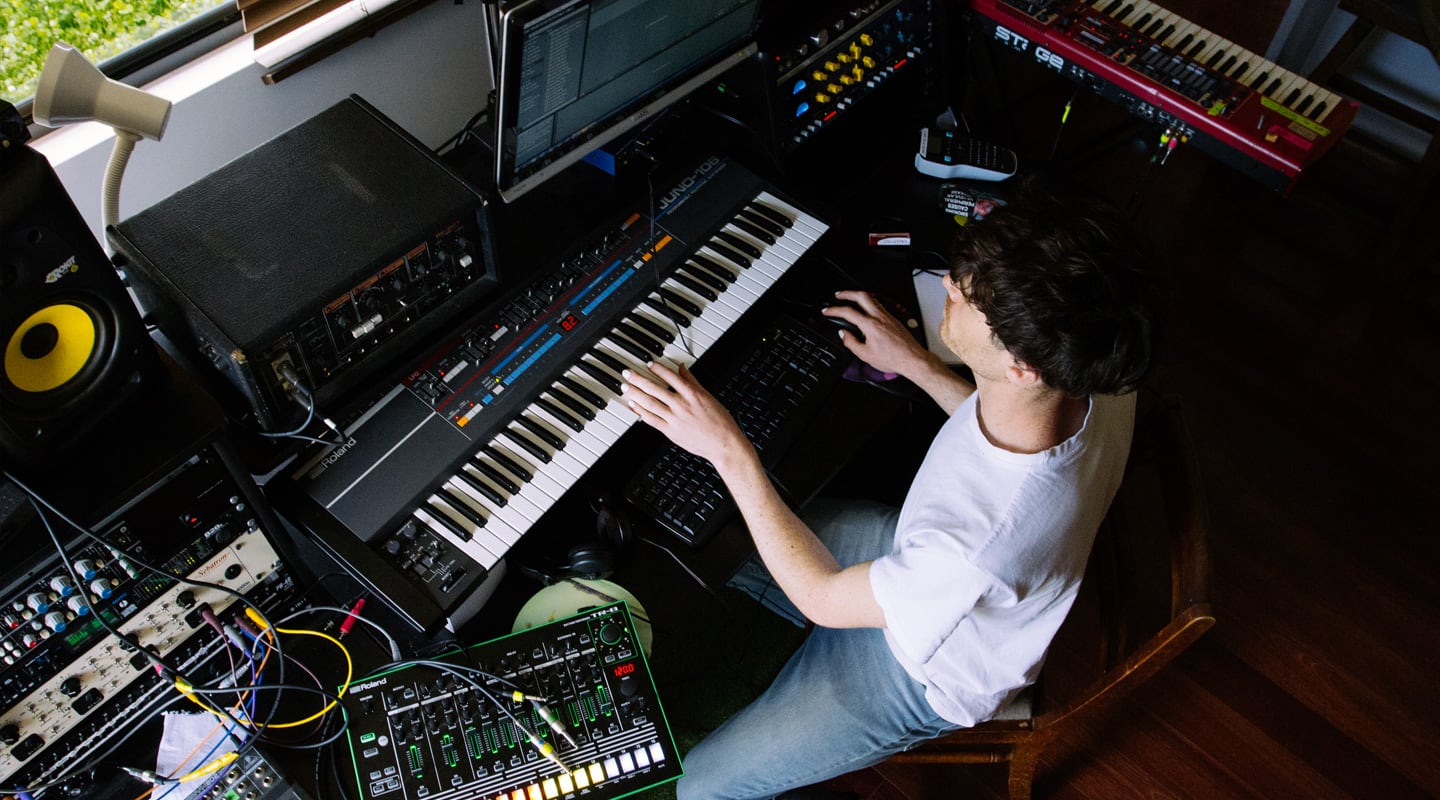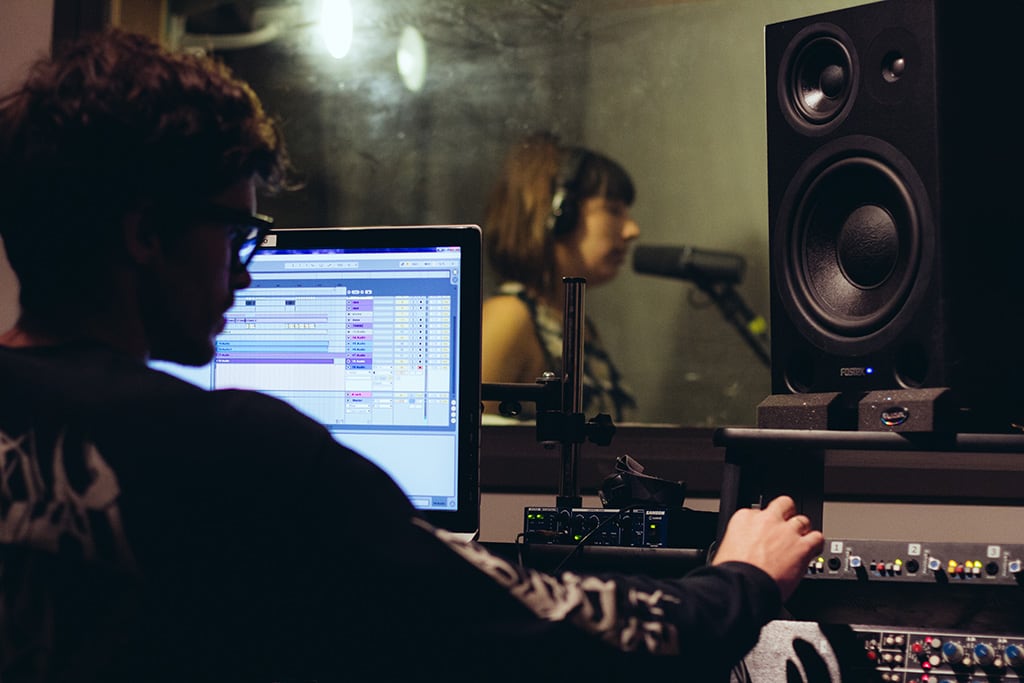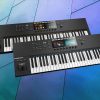
Getting in the Zone
Cloud Control decided to take the recording of Zone into their own hands. Entirely self-produced, it’s an outrageously successful ‘first effort’. We talk to frontman and producer Alister Wright and drummer Ulrich Lenffer.

Artist: Cloud Control
Album: Zone
“I feel like we discovered some really cheap ways of getting some pretty good sounds.” I love the understatement of this. Alister Wright is best known as Cloud Control’s sinuous frontman but he’s also the architect of the band’s first self-produced album, Zone.
Some three years in the making, Zone, is a labour of love. It’s the trophy-bride at the conclusion of a story of can-do, how-hard-can-it-be?, Aussie optimism. It’s a tale of back-yourself, do-your-homework, single-minded prosecution of a vision. In fact, because it’s a story of ‘inspiration finding a way’, it could be your story or my story… if only we had the necessary reserves of talent and resolve to carry it off.
It all started with a realistic look at the recording budget.
“Recording an album in a commercial studio is expensive,” Cloud Controls’s Ulrich Lenffer reminds us as we chat about producing Zone back stage at The Croxton on the band’s Melbourne leg of its Australian tour. “If you’re in a studio and you’re stressed out and you’re not getting the sound you’re after and everyone is stressed about the clock ticking… that’s not good for anyone. Take that element out. Choose the gear you want to use and learn how to use it.”
More understatement, but so true.
“We wanted more control over the result,” elaborates Al. “To get closer to the way I always imagined a Cloud Control album should sound. Without the big budget, the only way to achieve that level of control was to self produce.”
SELF PRODUCING? GO SHOPPING
Okay, so there wasn’t the six-figure recording budget but it’s still a cool, yet daunting, place to be: embarking on a self-produced album. Which way would you jump with gear? Would you put all your chips on a DSP-based, in-the-box solution like Pro Tools and/or a UA Apollo rig? What mics would you go for? How would you record drums?!
“I knew it was going to be a pretty tough journey,” continues Al. “But I also knew the production for this album was about capturing a vibe rather than needing a thousand tracks — the main thing was it had to feel good.
“It ended up sounding way better than we all thought it would.”
When I asked why, Al gave me the opening quote: “I feel like we discovered some really cheap ways of getting some pretty good sounds.”
Sounds almost easy… have a vision, then devote the time and dedication to lots of research and experimentation.
I asked Alister to run me through his vocal recording and mixing to give an idea of how he went about capturing ‘the vibe’.
It was the first occasion I’d taken the time to listen to the sonic characteristics of a preamp. ‘Oh that actually sounds pretty nice. Sounds noticeably better. I don’t know how, but it does


VOCALS: SPIRIT OF THE DEMO
“My vocal was actually one of the easiest things to nail,” explains Al. “For starters, it’s mostly about the performance. Often we’ve wished we could capture the spirit of a demo vocal recording but it’s hard to recapture that feeling in a ‘proper’ studio vocal session. For this album I had the luxury of actually using the ‘rough recording’ that still sounded really cool, or to have the time to record endless takes and comp those together. It felt like I developed the instinct around whether a vocal performance connected or not.
“Naturally we did experiment with compressors and preamps, and I felt most comfortable with a Shure SM7 dynamic microphone, or a Beta 58, into a Sebatron VMP-4000e quad pre. From there, I’d mostly go into an Auditronics channel strip (racked up by Rob Squire). Those two things working together was the sound of my vocal.
“I like the gnarly touch of the Auditronics overdrive. Having that in my ears when tracking really helped me perform. Compression can stop you feeling like you have any power in your voice but some extra gain can help you hear what’s going on; hear the detail. The Auditronics EQ is really nice as well.”


THE GEAR: CRUCIAL CHOICES
Alister, Ulrich and Heidi were no strangers to a recording studio but none of them had years of experience comparing preamps or EQs — they had no reason to. But they had attuned ears and plenty riding on the decisions they were making.
“A mate of ours in Sydney had a Sebatron quad preamp,” recalls Alister. “And it was the first occasion I’d taken the time to listen to the sonic characteristics of a preamp. I remember just running some synths through it, comparing it to whatever soundcard we had in the studio at the time. ‘Oh that actually sounds pretty nice. Sounds noticeably better. I don’t know how, but it does.’”
They didn’t regret the decision.
“I feel like the defining sound of this album’s production was that preamp [the Sebatron],” noted Alister. “We had an API quad pre for a while. We lived with it for quite a while before we realised it was ‘too rock’ for us. I know it’s a classic piece of gear but then maybe I’d grown so used to the sound of the Sebatron.
“The other pre we had was the UAD Twin-Finity quad,” recalls Ulrich. “It’s just so cool to have all the ins and outs and ADAT I/O. In a small studio all that stuff made a big difference.”

3 YEARS OF WORKFLOW
With some key gear decisions locked in (which you can read all about elsewhere in this story), the band made the most of the self-produced album workflow — working wherever feels comfortable and taking their time.
“The approach was to track things so they sound good on the way in,” explains Al. “And that also meant committing to a sound without the luxury of recalling a bunch of settings when it came time to finish a mix.
“The Roland Juno 106 synth parts, for example: we didn’t even have the battery to save the presets, so we had to commit to the sounds on those sessions.
“Same with the drum machine sequences. That was a Roland TR-8. We’d plug it into one channel on the Sebatron, run it through the dbx 165A compressor and be done.”
Again, it’s the vibe.
“I think it’s about not overloading your brain,” reflects Ulrich. “You just look at a session and think: ‘there’s my mono drum machine track, there’s my three-mic drum recording…’ That’s not overwhelming.”
“It’s hard not to overthink something like recording your own album,” continues Al. “So minimise as much as you can.”
“Right. To try and maintain the sanity of the group?” I suggest.
“To mixed results!”




























RESPONSES